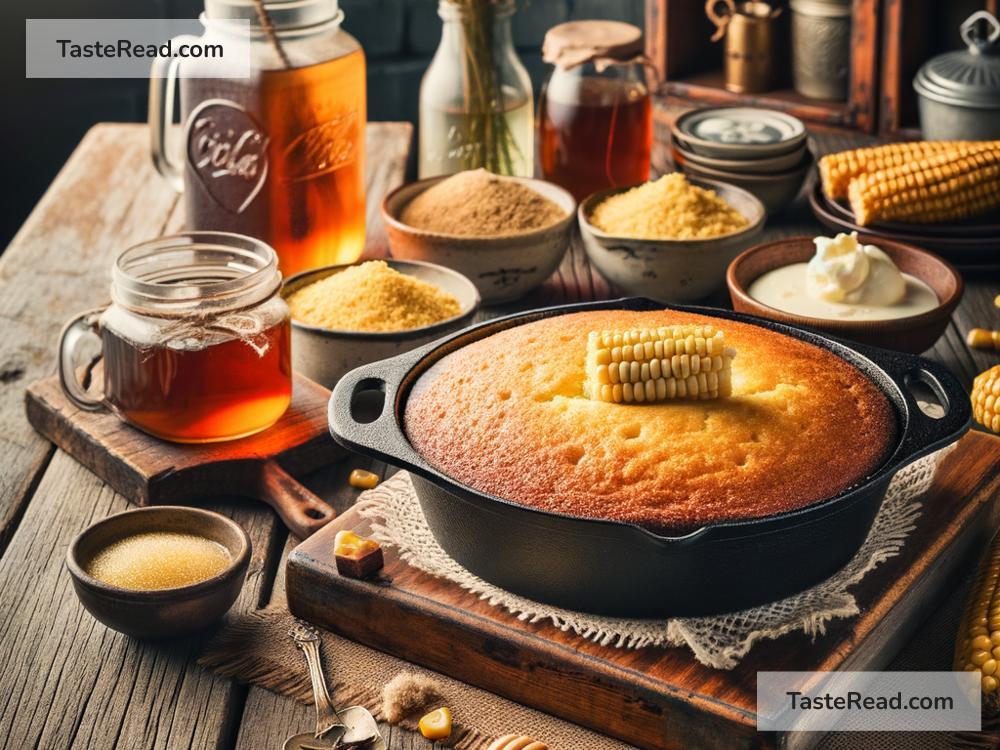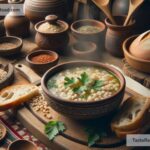Journeying Through Hearty Cornbread Legacies in the American South
Cornbread is more than just food in the American South—it’s tradition, culture, and history all wrapped up in a warm, golden slice. For many Southerners, cornbread is a taste of home, a symbol of togetherness, and a way to honor the past. This humble dish has been passed down through generations, and its story is as rich as its flavor. Let’s take a journey through the legacy of cornbread and discover why it holds such a special place in Southern hearts and kitchens.
The Roots of Cornbread
The history of cornbread begins long before the American South as we know it today. Cornbread’s foundation lies in Native American cooking. Indigenous peoples, like the Cherokee, Choctaw, and Chickasaw, used ground corn (or maize) to create simple, hearty bread. This corn was often ground into meal and used to make dishes like ashcakes and pone—early versions of cornbread.
When European settlers arrived in America, they adopted these recipes, as corn was cheap, available, and easy to grow. Wheat flour was expensive and often hard to find, especially in the rural South, so cornmeal became a practical and essential ingredient. Over time, cornbread evolved into the version we recognize today, with each region and family putting their own spin on the recipe.
A Diverse Dish
Cornbread might seem simple, but in the South, there’s nothing straightforward about it. There are countless variations to suit different tastes and traditions. Some like their cornbread sweet, adding sugar or honey for extra flavor. Others insist that real Southern cornbread should be savory, with no sweeteners—just the natural taste of corn shining through.
The texture varies too. Some recipes call for a crumbly loaf, perfect for crumbling into a bowl of beans or chili, while others produce a softer, cake-like version. Many Southern chefs swear by baking cornbread in a cast-iron skillet, which creates a deliciously crisp crust that’s hard to beat.
Adding special ingredients is another way Southerners personalize their cornbread. Jalapeños, cheese, bacon, or even creamed corn can take a basic recipe to the next level. Cornbread made with buttermilk often has a richer flavor, while those made with milk feel lighter and fluffier on the palate.
Cornbread and Community
Beyond its taste and versatility, cornbread is deeply tied to community and family. It’s the kind of dish that gathers people together. Whether it’s served at Sunday dinners, Thanksgiving feasts, or church potlucks, cornbread is a centerpiece of Southern hospitality.
Throughout history, cornbread has been a symbol of resilience and resourcefulness. Many Southern families, particularly during tough times like the Great Depression, relied on cornbread as a filling, affordable meal. Pairing cornbread with greens, beans, or buttermilk provided sustenance in challenging circumstances. These humble meals carried not only nutrition but also a sense of comfort and connection.
Even today, many families in the South treat cornbread recipes as prized heirlooms. Passed down from grandmothers and great-grandmothers, these recipes tell the story of generations—of shared meals, laughter, and memories made around the kitchen table.
Regional Variations
The South is vast, and every corner has its own take on cornbread. In Appalachian regions, cornbread tends to be simple and hearty, often cooked in cast iron and served with pinto beans and fried potatoes. Along the Gulf Coast, you might find cornbread packed with seafood flavors, like crab or shrimp, reflecting the area’s coastal influence.
In Texas, cornbread often comes with a spicy kick, thanks to jalapeños and chili powder. Meanwhile, in states like Alabama and Georgia, sweeter versions of cornbread, sometimes called “corn cake,” are more popular. These regional differences highlight the creativity and adaptability of Southern cooks, who have found countless ways to make cornbread their own.
A Modern Revival
While cornbread will always have its roots in tradition, it continues to evolve in modern kitchens. Today, chefs across the South—and even beyond—are experimenting with cornbread, blending old techniques with new flavors. Gluten-free cornbread made with almond flour or experimenting with unusual additions like smoked paprika or sundried tomatoes are becoming increasingly popular.
Some restaurants elevate cornbread to gourmet levels, serving it alongside high-end dishes or even turning it into desserts like cornbread pudding with caramel sauce. These creative twists keep the legacy of cornbread alive while introducing it to a whole new generation of food lovers.
Keep the Legacy Alive
For anyone who wants to connect with Southern heritage, making cornbread is a delicious place to start. The beauty of cornbread is that it’s simple and flexible, requiring just a handful of ingredients to create something truly comforting. Whether you prefer it sweet or savory, crumbly or soft, cornbread always tells a story—a story of hardworking families, local traditions, and shared love for gathering around a good meal.
As you take your first bite, you’ll taste the history: the ingenuity of Native American cooks, the perseverance of Southern pioneers, and the warmth of countless families who’ve kept this dish alive for centuries. So the next time you pull a pan of cornbread out of the oven, remember—you’re not just baking bread. You’re honoring the hearty, enduring legacy of the American South.
Cornbread isn’t just a recipe—it’s a connection.


